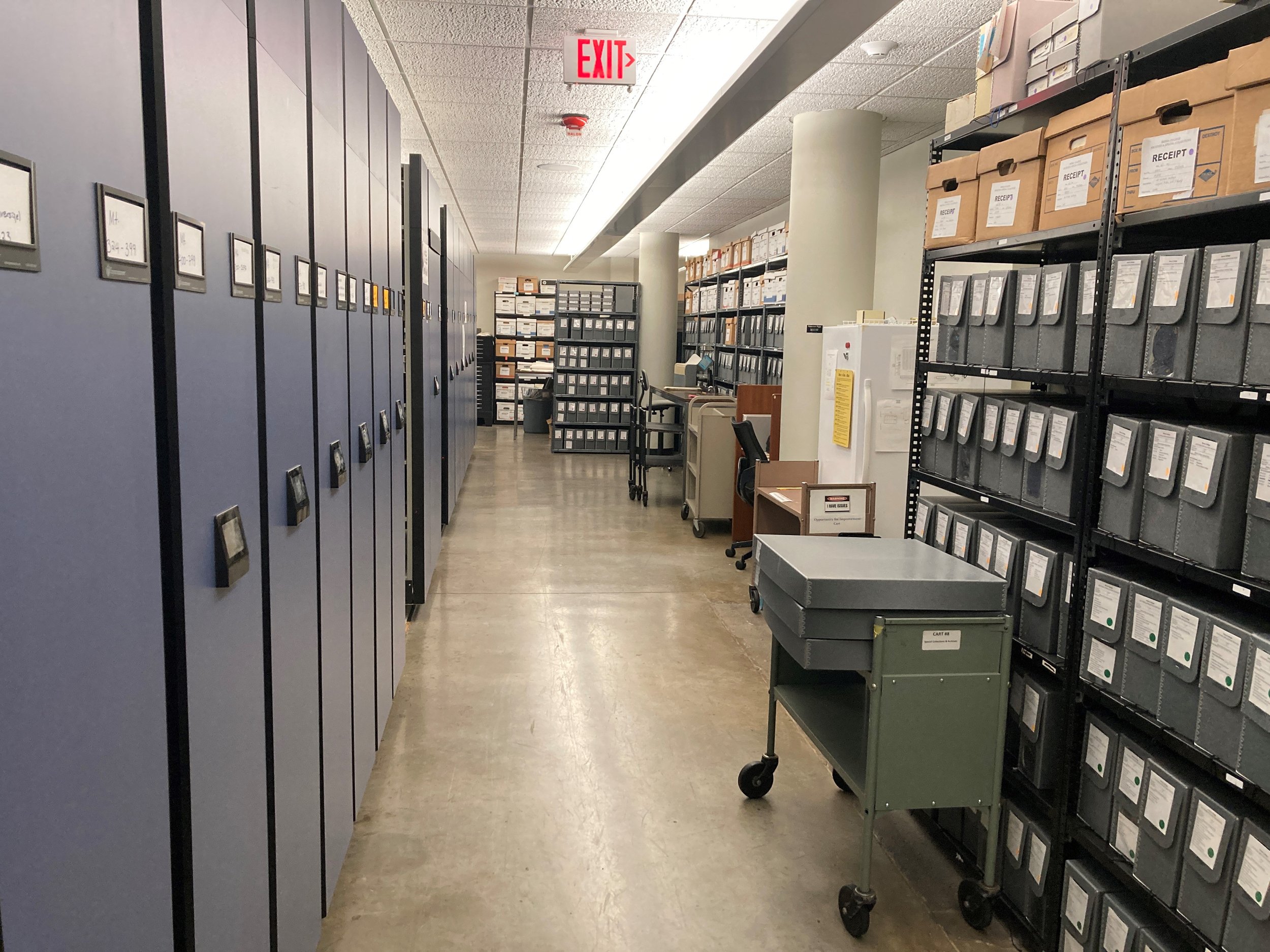
An Artist Archive
Visually documenting processing of the Janis Ian collection.
A project exploring the validity of creating visual access points as an alternative to text heavy archive catalogues. Using the processing of the Janis Ian collection as a test study.
Supported by the Appalachian College Association, Innovation & Enrichment Development Opportunities fund.

The Janis Ian collection, Berea College Archives
About the project
As a profession, archivists enable controlled access to information, records and items held within their collections. Our principal tool for achieving this objective is the formation, publication, and subsequent constant revision of archive catalogues. Methodical in-depth record inventories that enable researchers or interested stakeholders to audit holdings to assess the informational value held.
These same processes enact as an unintended exclusionary access barrier for visual learners, artists’ and creative practitioners. How can an archive open itself to multi-discipline research methods, if it’s main mode of communicating inventory holdings is text heavy catalogues? A common misconception among artists is that archives are purely for historians only. In a sense they are not wrong as we continually brand & steep our processes to facilitate a service to the humanities discipline.
This is an on-going project exploring the validity of using art as an alternative access point to the collections, the equivalent of an archive catalogue. Over the course of 2023-24, this website will be frequently updated with images, blogs, ideas, as I process and find methods to activate the records retained in the Janis Ian collection, held in Berea College (KY).
In the studio, collaging magazines obtained from goodwill.
Magazines featuring the Beatles c1960s, an early influence on Janis Ian.
Deposited with Berea College Special Collections and Archive April 2022, the collection arrived in over 160 boxes containing multiple record formats including photos, notebooks, audio visual analogue and digital records. Holistically the collection documents Janis’s emergence in the music industry c1960s with Societys Child, right up to the most recent release of Light at the End of the Line (2022).
Sourcing magazines from similar time periods, I played around with the concept of paper collage compositions. The information used is more reflective of the environment of which Janis was writing songs and performing. Though an early problem encountered was trying to create compositions reflective of the archive material I was witnessing. An early painting playing with the idea of visualising Hooper Painting was later completed covered over by the guitar composition below.
Concrete Poetry
Janis Ian’s 1937 Martin D-18 guitar has it’s own unique story, and already is proving to be the must see item within the collection. Gifted by her Father, this incredible soulful sounding guitar was later stolen from Janis but after two decades of appeals, it found it’s way back to her.
A single photographic image doesn’t do the sound justice. Guitars move when played, and this guitar fills the space with sound echoing vibrations. How can you visualise sound?
By chance I attended an online talk hosted by the University of Iowa Sackner Archives who introduced the concept of concrete poetry. A method where text / images create a visual poem. While in the early stages of exploration - there is certainly exciting potential to create collage compositions in this way.
On Songwriting, Readers Digest, Janis Ian, 1991.
In my opinion - this article is possibly the most outstanding articulation describing a specific form of creative practice. While Janis Ian specifically exploring themes, methods, experiences, writing her own songs. The literature can be broadly applied across multiple creative disciplines.
Profound richness of content is on every part of this 20 page photocopied draft. Highlighting, note taking, key themes started to ring out. Two distinct forms of songwriter being craft and instinct. Craft tending to produce large amounts of duplicated outputs but generally technically excellent. These writers have a successful recipe and keep producing until the success cycle ends. The instinct writer relies on their own gut, allowing for inspiration to carry them. These writers tend to create entire new rules and structures. While both maybe suspicious of the others ideology, to be a successful songwriter – you need a healthy mix of both philosophies.
Regardless of your preference. Songs require constant revision, the composition is in a constant state of flux, may take weeks or decades to complete. Even then, some will never be complete – even if highly successful, they may not quite satisfy the author. Learning from concrete poetry, I started to revise my research notes, applying the text and notes together – breaking a 20 page draft article into four compositions. Then overlaying the notes with found imagery from within the collection. Literally applying the lessons learnt from the article to the collage composition.
Society’s Child, Janis Ian
September 1966 saw the release of Janis Ian’s breakthrough track Society’s Child. A simple song authored by a teenage girl provoked hatred, censorship, praise, admiration in equal measure. For every state who censored / banned the broadcast of the record concerning an interracial relationship, saw radio stations in other states play it on repeat. While Janis herself was describing the level of bigotry she encountered, it was one bigots destruction of the physical record that didn’t make sense to me.
How would you destroy a vinyl record intentionally? Apply a forceful stamp of the boot? Whack it with a hammer? Fling it against the wall? Many options even going as far as driving over it come to mind. But one bigot not satisfied decided to smash the record using their head. I was already perplexed how a song about interracial relationships could provoke such strong feelings, but the decision to smash a vinyl record of their own head which could surely only injure themselves just adds to the bewilderment.
This collage composition is shaped by this story.
More coming soon.
Please check back throughout the academic year 2023-24 for updates.















